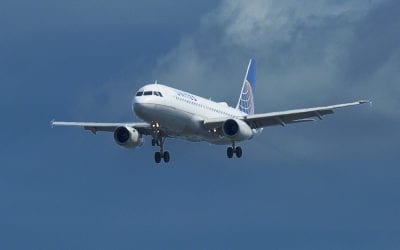I just sat in on the Subcommittee on Aviation of the House Committee on Transportation and Infrastructure hearings about what to do with the FAA in the coming years. After almost two years of short-term extensions and continuing resolutions, the committee is hoping to have a long-term funding bill emerge from the 111th Congress.
Over the next few days, I will be discussing many of the specifics of the hearings, however, I found the overall structure of the hearings to be most illustrative of problems we are currently facing. The basic set-up of the hearings seems to herald business as usual. There is an institutional pecking order. It was on full display.
I don’t think the subcommittee is doing itself any favors by organizing its hearings in tranches of government, corporate executives, worker representatives with a token consumer advocate thrown in at the end of the proceedings.
The structure of the hearings eliminated any give and take between the various interested parties in this pending legislation. At no time was there an opportunity for workers to interact with executives or for executives to interact with government regulators. It seemed strange to me to hear witness after witness intone statements about the desires of their constituencies with no interaction.
These hearings went on from 2 p.m. until 7 p.m. The hearing room was overflowing, which necessitated an extra room where spectators could view the proceedings on a big screen TV. At the beginning of the procedures, the excitement was palpable.
First, several Representatives made statements, then a panel of government executives from the FAA, GAO and the Department of Transportation each made a statement. Their testimony was followed by a series of detailed questions.
Following the government executives, corporate representatives had their time of testimony in front of the subcommittee. The President of the Airports Council International-North America, the Chair of the American Association of Airport Executives, the President and CEO of the Air Transport Association of America, the President and CEO of the National Business Aviation Association, President of the Regional Airline Association, the President of the Aircraft Owners and Pilots Association and the President and CEO of Rockwell Collins all pitched their side of the story as far as their wishes and druthers for FAA funding. These statements were followed by a series of questions.
Finally, almost four hours after the start of the hearing, the worker bees of the industry were given their chance to testify and filed to their chairs in front a crowd of spectators that had dwindled to a couple of dozen stalwarts.
This group represented not those who manage the operation of massive government organizations or who represent the big-money interests of the aviation industries and infrastructure, but the people who make the whole system work on a day to day basis. This layer of the air transportation system is where the final impact of government/corporate dealing is felt.
The president of the Air Traffic Controllers Association, the president of the Professional Aviation Safety Specialists, the president of the Air Line Pilots Association, the president of the Association of Flight Attendants, the vice-president of the International Association of Machinists and Aerospace Workers and the Assistant Director of the Transport Workers Union of America all made statements.
Finally, the only representative of the real users of our system, the consumers, made her statement. Kate Hanni of Flyersrights.org pitched her Airline Passengers’ Bill of Rights to guarantee airline passengers humane treatment during tarmac delays of three-hours or more.
There were a few questions and some laudatory comments about how well aircraft crews had performed in recent crashes that had no fatalities. Then the subcommittee adjourned.
After all of the huffing and puffing, the subcommittee had a long wish list and no focus on how different government, corporate, worker and consumers entities could work together to blend the best of each of their positions. Perhaps that is the role of lobbyists working with committee staffers and members.
However, there was no representation in all of these proceedings for the ultimate end users of the air transportation system. No consumers, nor their representatives, were there to complain about the recent introduction of fees for every aspect of airline transportation, about the impact of taxes and airport fees on ticketing, about the poor cleanliness of many of the airlines’ aircraft, about the heavy-handed charges for simple changes like changing a name or about the deceptive pricing advertised by airlines.
At least Kate Hanni was there to remind the members of the subcommittee that there are human beings traveling. They ultimately are the ones who suffer when corporate and operation needs are put in front of service and good treatment for consumers.
The subcommittee hearings, my first, were an eyeopener. There really is a pecking order. Unfortunately, it is upside down. The end user, the consumer, should be heard from first. Then each layer of the industry and finally the government could defend their actions based on the outcome to consumers.
Why should the people whom the House represents have to sit and wait for four hours to present their case. They could go first and the very-busy, self-important Mr. Jones, CEO of Rockwell Collins, (who flew in on his corporate jet because it was efficient and allowed him to attend a morning investor conference in Florida, then these hearings in Washington, DC and finally a scheduled corporate board meeting in the evening in Philadelphia) could go last.
That would have been a very good (and necessary) use of his corporate jet. His board of directors could have waited for him as he was winging his way into Philly landing at 9 p.m., just as the families of the air traffic controllers, flight attendants, pilots and machinists had to wait for them to straggle home for dinner and time with their children.

Charlie Leocha is the President of Travelers United. He has been working in Washington, DC, for the past 14 years with Congress, the Department of Transportation, and industry stakeholders on travel issues. He was the first consumer representative to the Advisory Committee for Aviation Consumer Protections appointed by the Secretary of Transportation from 2012 through 2018.



